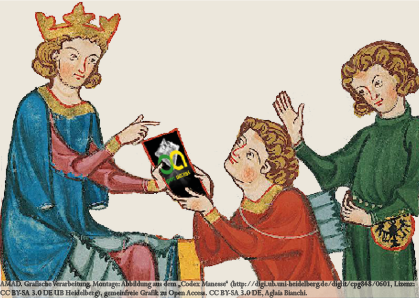AMAD
"Archivum Medii Aevi Digitale - Specialized open access repository for research in the middle ages"To submission

| Date: | 2015 |
| Title: | Dentoalveolar diseases and dietary habits in the social upper classes of the Italian Renaissance: the Guinigi family from Lucca |
| Author: | Minozzi, S. Fornaciari, G. Ricci, P. Lubritto, C. Riccomi, G. |
| Description: | Teeth and their pathologies are very important when studying the life-style, social behaviour, health condition and diet of ancient populations. Many articles in paleoanthropological literature describe dentoalveolar diseases in the Antiquity, mainly in the low-class societies, and only a few reports regard the oral conditions of the social upper classes. The purpose of this research is to examine the dental condition in an upper-class family of the Italian Renaissance, in terms of dietary habits and food resources. The research was carried out on the skeletal remains of the Guinigi family from Lucca (Tuscany), dated back between the end of the 14th and first half of the 17th century. The study of dentoalveolar diseases was performed on 45 individuals and 325 teeth, equally distributed between males and females, and isotopic analysis of 13C and 15N was performed on 13 samples. The frequency of dentoalveolar diseases was very high in the upper class samples, and varied from 27% to 60% of the teeth/ alveoli affected, while the frequencies were lower (16-20%) in the rural samples. Caries was extraordinary frequent in the Guinigi family with a prevalence of 70.8% in females and 43.5% in males, while ante-mortem tooth loss and abscesses were more frequent in males, whose life span was higher. Different factors may promote tooth decay, but dietary habits, as well as physiological or behavioural factors, certainly play an important role in caries development, and may explain the differences observed between sexes. The results of isotopic analysis indicated a diet based on higher protein intake with respect to the lower social classes, with a good presence of vegetables, but gave no indication about cariogenic foods. A large consumption of not complex sugars may be responsible, at least in part, for the high frequency of caries among the wealthy classes and in particular in the Guinigi family. It is well known that expensive and elaborate foods, including sweets, sugar cane and honey, adorned the banquet tables of Renaissance Princes. Moreover, some members of the Guinigi family, in the middle of the 16th century, founded a company for sugar cane refining and trade, probably due to the consumption of very large quantities of this elitarian food. References Fornaciari G. Food and disease at the Renaissance courts of Naples and Florence: A paleonutritional study. Appetite 2008;51:10-4. Fornaciari G. “Tu sei quello che mangi”: le economie alimentari nelle analisi isotopiche di campioni medievali e post-medievali della Toscana. Centro Italiano di Studi sull’Alto Medioevo, LXIII Settimana di Studio (Spoleto, 9-14 aprile 2015). In press. Grieco AJ. Alimentazione e classi sociali nel tardo Medioevo e nel Rinascimento in Italia. In: Flandrin JL, Montanari M, Storia dell’alimentazione. Bari 2003, pp. 371-380. |
| URI: | https://www.amad.org/jspui/handle/123456789/61806 |
| Other Identifier: | http://hdl.handle.net/11568/785458 |
| AMAD ID: | 698850 |
| Appears in Collections: | BASE (Bielefeld Academic Search Engine) General history of Europe |

